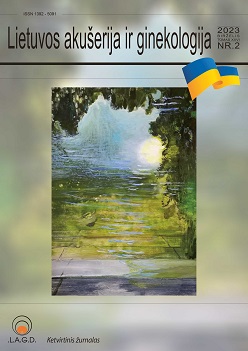Dvynių nėštumo eigos ir baigčių palyginimas pastojus po pagalbinio apvaisinimo ir natūraliai
Santrauka
Santrauka. Daugėjant pagalbinio apvaisinimo procedūrų, didėja akušerinių bei perinatalinių komplikacijų dažnis. Jos dažniausiai susijusios su daugiavaisiu nėštumu po pagalbinio apvaisinimo. Siekiant išvengti su daugiavaisiu nėštumu susijusių komplikacijų, kai kuriose šalyse pradėta taikyti vieno embriono perkėlimo į gimdą politika. Nuo 2009 m. daugiavaisių nėštumų skaičius pasaulyje po pagalbinio apvaisinimo procedūrų mažėjo. Lyginant dvynių nėštumo pastojus natūraliai, ir po pagalbinio apvaisinimo eigą ir baigtis, dažniausios daugiavaisio nėštumo po pagalbinio apvaisinimo komplikacijos yra nesivystantis nėštumas (vieno iš vaisių), priešlaikinis gimdymas, mažas naujagimių gimimo svoris, dažnesnis labai neišnešiotų naujagimių gydymas intensyviosios terapijos skyriuje, perinatalinis mirtingumas. Šiuo metu dėl patikimų tyrimų stygiaus nėra bendro sutarimo, ar daugiavaisis nėštumas po pagalbinio apvaisinimo turi įtakos vaisiaus raidos ydų vystymuisi. Manoma, kad pastojimo būdas neturi žymios įtakos motinos sveikatai, gimdymui, pogimdyminiam laikotarpiui, kai yra dichorioninių dvynių nėštumas. Mokslinių tyrimų duomenys yra prieštaringi. Diskutuojama, ar pats pagalbinis apvaisinimas, ar būklės, kurios lemia pastojimo būdą, turi didesnės reikšmės motinos ir perinatalinėms komplikacijoms.

